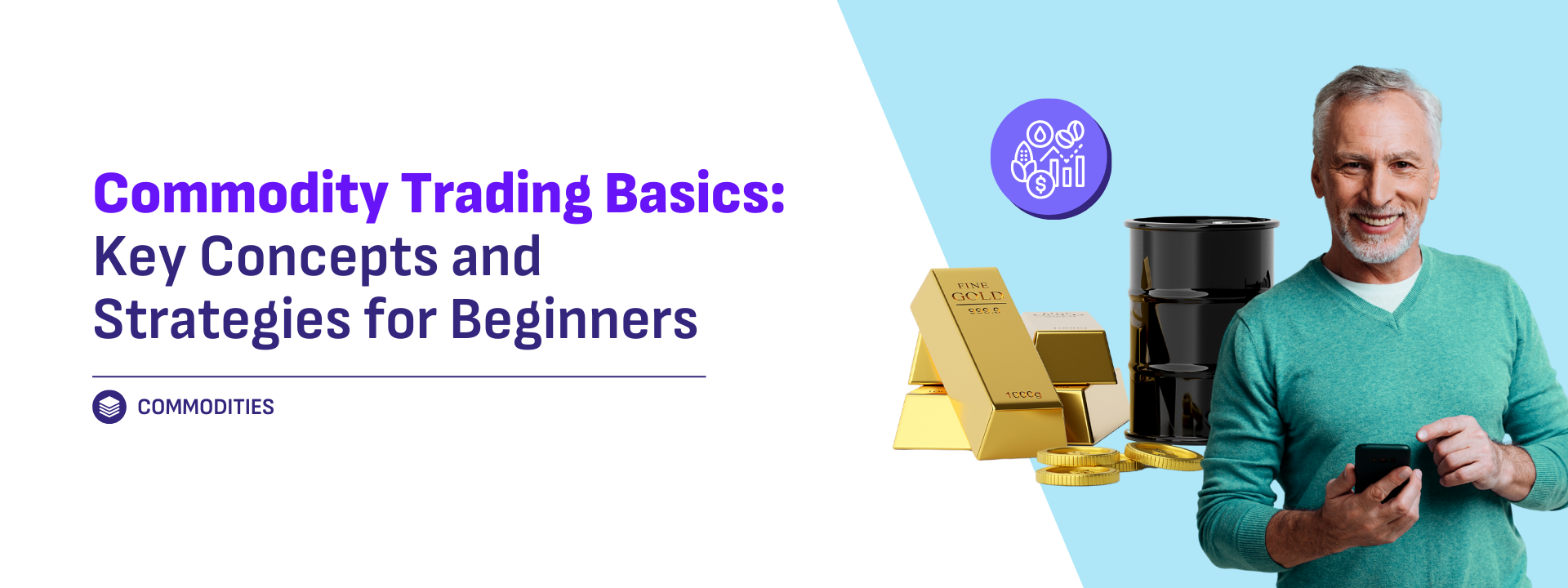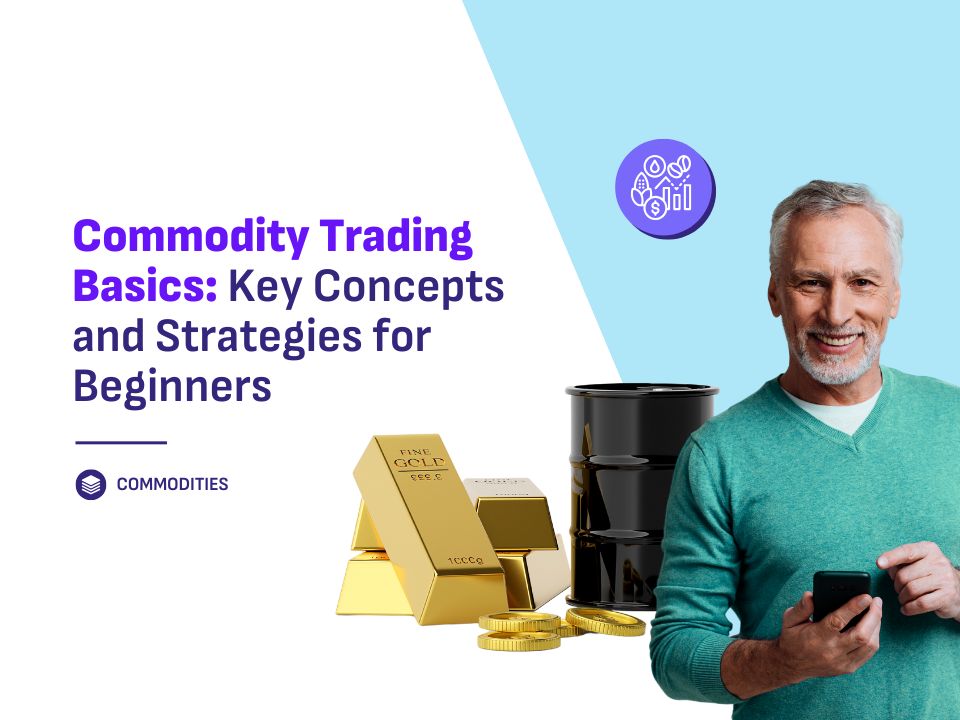

Commodity Trading Basics: Key Concepts and Strategies for Beginners
Introduction
Commodity trading is a dynamic field that offers opportunities to profit from the fluctuations in prices of raw materials and natural resources. For beginners, understanding the basics of commodity trading and employing fundamental strategies can be the key to navigating this complex market successfully. This article introduces the core concepts of commodity trading and outlines essential strategies for new traders.
What is Commodity Trading?
Commodity trading involves buying and selling raw materials or primary agricultural products. These commodities can be broadly categorized into two groups:
- Hard Commodities: These include natural resources such as metals (gold, silver, copper), energy products (oil, natural gas), and minerals. Hard commodities are often mined or extracted.
- Soft Commodities: These include agricultural products such as grains (wheat, corn), livestock (cattle, hogs), and other products derived from farming. Soft commodities are typically grown and harvested.
Commodity trading can take place in physical markets or through derivative instruments, such as futures contracts, options, and ETFs (Exchange-Traded Funds). These derivatives allow traders to speculate on the price movements of commodities without physically handling the goods.
Key Concepts in Commodity Trading
- Futures Contracts: A futures contract is a standardized agreement to buy or sell a specific quantity of a commodity at a predetermined price on a future date. Futures contracts are traded on commodity exchanges, and they are used by traders to hedge against price fluctuations or to speculate on price movements.
- Spot Market vs. Futures Market: The spot market involves buying and selling commodities for immediate delivery, while the futures market deals with contracts for future delivery. Traders in the futures market often use these contracts to lock in prices or speculate on future price movements.
- Leverage: Commodity trading often involves the use of leverage, which allows traders to control a larger position with a smaller amount of capital. While leverage can amplify potential profits, it also increases the risk of losses. It’s crucial for traders to use leverage cautiously and understand its implications.
- Contango and Backwardation: These are terms used to describe the relationship between futures prices and the spot price of a commodity. Contango occurs when futures prices are higher than the spot price, often due to storage costs or other factors. Backwardation occurs when futures prices are lower than the spot price, typically reflecting a shortage or high demand for the commodity.
- Margin: Margin is the amount of capital required to open and maintain a futures position. It acts as a security deposit to cover potential losses. Traders must be aware of margin requirements and maintain sufficient funds to avoid margin calls or forced liquidation.
- Seasonality: Commodity prices often exhibit seasonal patterns due to factors such as weather conditions, harvest cycles, and demand fluctuations. Understanding seasonal trends can help traders make informed decisions and anticipate price movements.
Fundamental Strategies for Commodity Traders
- Trend Following: Trend following involves identifying and trading in the direction of established market trends. Traders use technical analysis tools, such as moving averages and trendlines, to spot trends and make trades that align with the prevailing direction.
- Swing Trading: Swing trading focuses on capturing short- to medium-term price movements. Traders enter positions based on short-term trends or price patterns and aim to profit from price swings within a specific timeframe.
- Arbitrage: Arbitrage involves exploiting price differences between related markets or instruments. In commodity trading, arbitrage opportunities may arise between spot and futures markets or between different commodity contracts.
- Hedging: Hedging is a risk management strategy used to protect against adverse price movements. Commodity producers and consumers use hedging to lock in prices and mitigate the impact of price volatility on their operations.
- Fundamental Analysis: Fundamental analysis involves evaluating supply and demand factors that influence commodity prices. Traders assess factors such as weather conditions, geopolitical events, economic indicators, and production levels to make informed trading decisions.
- Technical Analysis: Technical analysis focuses on studying historical price data and chart patterns to predict future price movements. Traders use tools such as chart patterns, technical indicators, and volume analysis to identify entry and exit points.
- Diversification: Diversification involves spreading investments across different commodities to reduce risk. By diversifying their portfolio, traders can mitigate the impact of price fluctuations in any single commodity.
Tips for New Commodity Traders
- Educate Yourself: Before diving into commodity trading, take the time to understand the market, trading instruments, and strategies. Online resources, courses, and market analysis can provide valuable insights.
- Start Small: Begin with a small trading position to gain experience and build confidence. As you become more familiar with the market, you can gradually increase your trading size.
- Develop a Trading Plan: Create a trading plan that outlines your objectives, strategies, risk tolerance, and money management rules. Stick to your plan and avoid making impulsive decisions based on emotions.
- Monitor Market News: Stay informed about market news and events that can impact commodity prices. Economic reports, geopolitical developments, and weather conditions can influence market movements.
- Practice Risk Management: Implement risk management techniques, such as setting stop-loss orders and using appropriate leverage, to protect your capital. Avoid risking more than you can afford to lose.
- Use Demo Accounts: Many trading platforms offer demo accounts where you can practice trading with virtual funds. Use these accounts to familiarize yourself with trading tools and strategies before trading with real money.
- Seek Professional Advice: Consider consulting with a financial advisor or trading professional to gain personalized guidance and insights.
Summary
Commodity trading offers exciting opportunities for investors seeking to profit from the price movements of raw materials and natural resources. By understanding the fundamental concepts and strategies, new traders can navigate this complex market with greater confidence. Remember to stay informed, practice risk management, and continuously educate yourself to enhance your trading skills and achieve success in the world of commodity trading.

